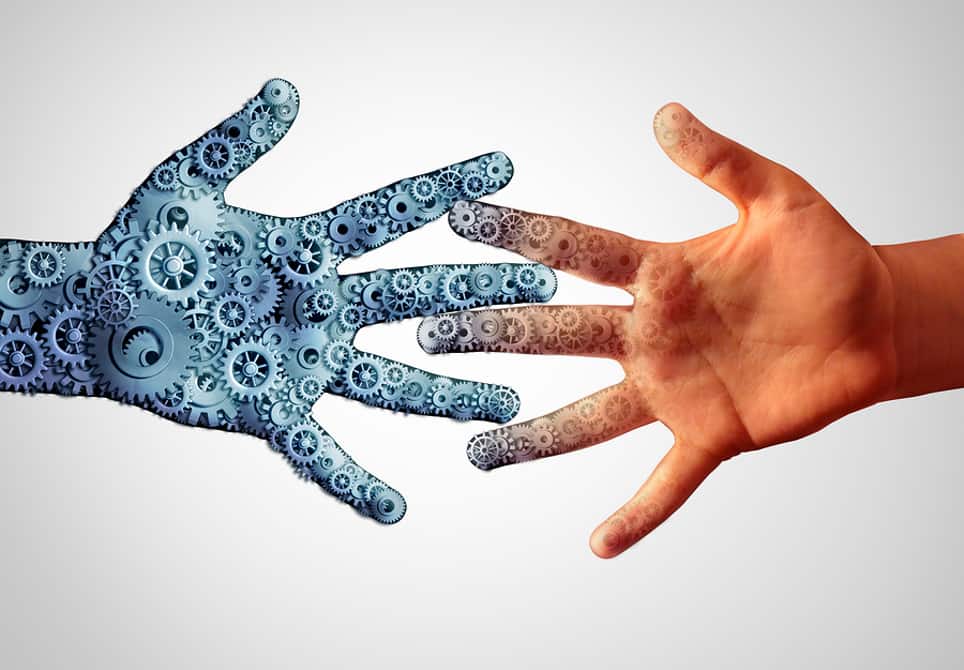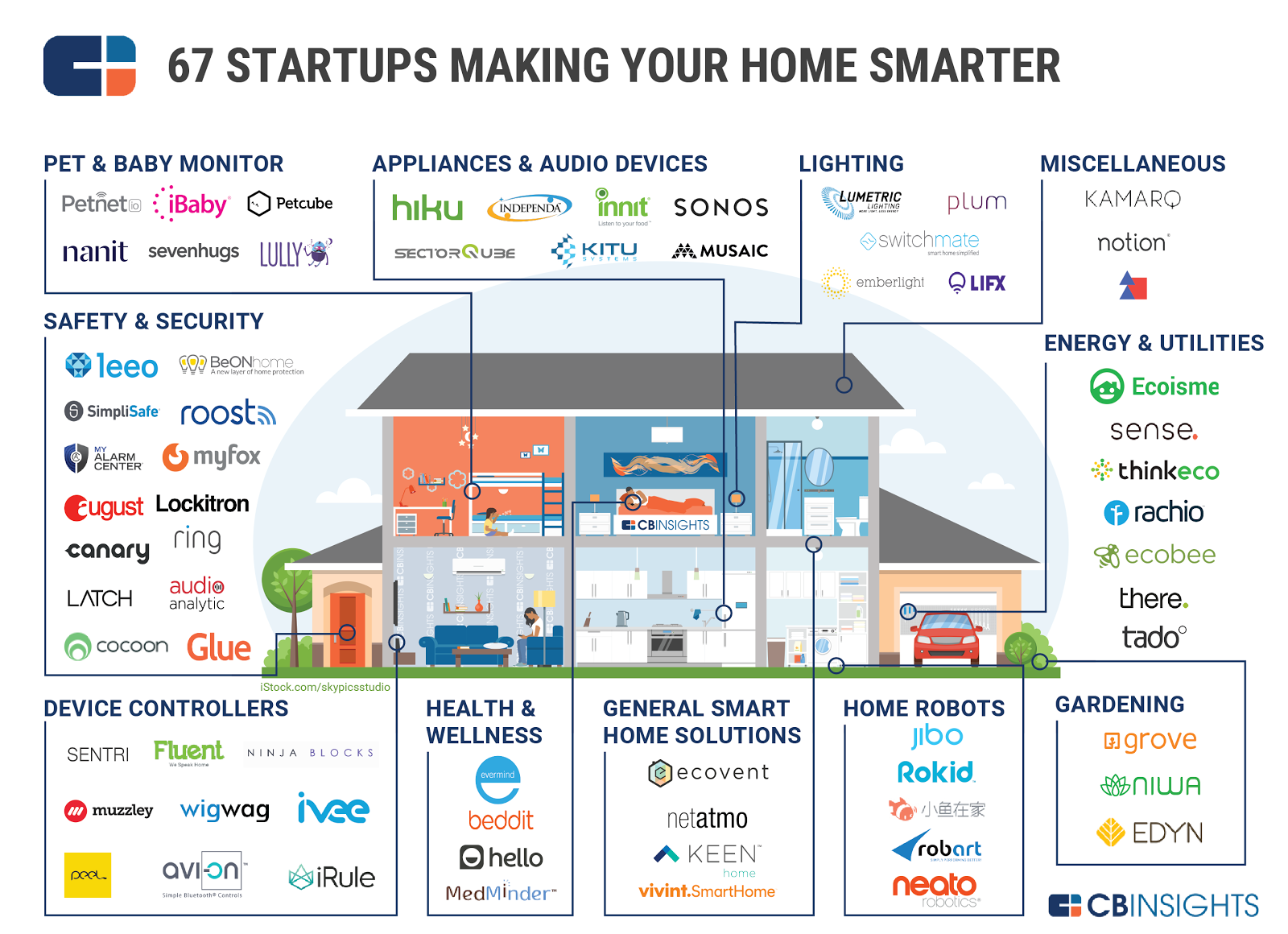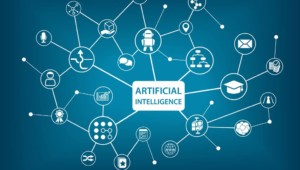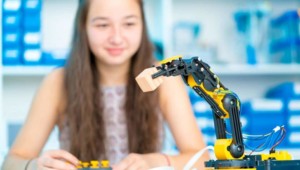Artificial Intelligence is Reshaping Life On Earth: 101 Examples

Artificial Intelligence (AI) will have more influence on the lives and livelihoods of young people over the next 20 years than any other factor.
This month I’ve been tracking news headlines to get a sense for how widespread AI applications have become. With a couple news alerts and searches I spotted 101 current applications — no SciFi here, these are tools people are using today. And these aren’t just clever algorithms — they are getting better and smarter the more data they interact with.
Life & Media
1. Mapping apps and satellite view (Google Earth)
2. Speech recognition (TechCrunch)
3. Dating apps (Vancouver Sun)
4. Language translation (Silicon Valley Business Journal)
5. Image recognition (Fei-Fei Li on TED)
6. AI composition and music recommendations (Newsweek)
7. Make reservations at a restaurant. (Techcrunch)
8. Filters content and make recommendations (Hubspot podcast)
9. Write articles (Recode)
10. Optimize website-building (TechCrunch)
11. Manages prayer requests (Deseret News)
12. Track and store the movements of automobiles, trains, planes and mobile phones (IBM)
13. Track real-time sentiments of billions of people through social media (IBM)
14. Beat the best humans in chess and Go (CCTV)
15. Coaching social-emotional relationships (Phys)
Safety & security
16. Security-driven AI systems can easily detect and identify bad behaviors from good behaviors. (Economic Times)
17. Quickly find security vulnerabilities (Defense One)
18. Criminal justice system is increasingly using algorithms to predict a defendant’s future criminality (Propublica)
19. Anomaly detection using machine vision (IBM)
20. Predictive models for crime (IBM)
21. Autonomous aerial and undersea warfighting (Nextgov)
22. Guide cruise missiles (Express)
Industry & Agriculture
23. Optimize crop yield (Amr Awadallah in Forbes)
24. LettuceBot reduces chemical use by 90% (Wired)
25. Driverless tractors (Business Wire)
26. Manufacturers predict which machines will breakdown (Amr Awadallah in Forbes)
27. Smart robots for repetitive jobs from apple picking and sneaker maker, (Techcrunch)
28. Robots develop and share new skills (MIT)
Transportation
29. Driverless cars (Nature) coming to Pittsburgh this fall (Wired)
30. Driverless trucks (TechCrunch)
31. Managing drone traffic (Yahoo)
32. Making bus routes smarter (Shanghai Daily)
33. Improve the efficiency of public transportation systems (IBM)
34. Oil exploration efficiency (Oil Price)
Environment
35. Prediction and management of pollutants and carbon footprints. (IBM)
36. Make data centers, power plants, and energy grids more efficient (Money)
Medicine & Health
37. Digitized health records and all medical knowledge to improve diagnosis (IBM)
38. Performing cohort analysis, identifying micro-segments of similar patients, evaluating standard-of-care practices and available treatment options, ranking by relevance, risk and preference, and ultimately recommending the most effective treatments for their patients (IBM)
39. Power precision medicine (NIH)
40. Reduction of medical errors (H&HN)
41. Study the genetics of Autism (SAC)
42. Analyze genomic sequences to develop therapies (Amr Awadallah in Forbes)
43. Read x-rays better than a radiologist (nanalyze)
44. Genomic editing — which may be the most important (and scariest) item on the list (Time)
45. Use social media to diagnosis depression and mental illness (Tech Times)
Organizational Management
46. Speeding and improving Identity verification and background checking (PE Hub)
47. Monitor employee satisfaction and predict staff turnover (HuffPost)
48. Sorting through stacks of résumés from job seekers. (Propublica)
49. Replace handcrafted rule-based systems (TechRepublic)
50. Smart virtual assistants (Slate)
51. Enterprise tech companies provide deep learning as a service — AI on demand (TweakTown)
52. Humans and robots will increasingly collaborate on problem solving (Quartz)
53. Automated floor cleaning (Slate)
Art & Architecture
54. Organic algorithms in architecture (Greg Lynn on TED)
55. Virtual reality art (Wired)
56. Synthesized music (Newsweek)
Social Services & Infrastructure
57. Timely and relevant answers to citizens (IBM)
58. Predict the needs of individuals and population groups, and develop plans for efficient deployment of resources. (IBM)
59. Prediction of demand, supply, and use of infrastructure (IBM)
60. Mobile phone network services (RCRwireless)
61. Analysis of lead contamination in Flint water (Talking Machines)
62. improve building and city design (Property Report)
63. Poverty map of Africa to improve services delivery (Yahoo)
Finance & Banking
64. Fraud detection (Business Insider)
65. Scan news, spot trends and adjust portfolios (Hubspot podcast)
66. Determine credit scores and qualify applicants (Propublica)
67. Find the best insurance coverage at the right cost (IBM)
68. Deliver personalized service with reduce error rates (Finextra)
69. Handle 30k banking customer services transaction/month (American Banker)
70. Answer 100M financial questions involving complex data (Fast Company)
71. Auto-adjudication of insurance claims (Fast Company)
72. Tax preparation (CFO)
Marketing & Customer Service
73. Power chatbot customer service (CB Insights)
74. Product recommendations (Digital Marketing Blog)
75. Manage White House comments (Techcrunch)
76. Chatbot lawyer contests parking tickets (Guardian)
77. Robot inventory checker (NY Times)
78. Recognise customer behavior and provide predictive customer service (Brand Equity)
79. Predict eBay sales (HeatST)
80. Improve sales funnel conversion (Digital Marketing Blog)
Entertainment
81. Fantasy football picks (Fake Teams)
82. Writing screenplays (Entertainment)
Education
83. Recommend next best learning experience (Forbes)
84. Personalized learning programs (IBM)
85. Intelligent tutoring (Forbes)
86. Provides six trait writing feedback (Hubspot podcast)
87. Digitized the world’s literature enabling search/analysis (IBM)
88. Embedded adaptive assessments promotes competency-based learning (Google’s Jonathan Rochelle in Business Insider)
89. Improve career education (Google’s Jonathan Rochelle in Business Insider)
90. AI is boosting HigherEd persistence with text nudges (Rose Luckin in Times HigherEd)
91. Process intelligence tools identify and visualize opportunities (MIT)
92. Matching teachers and schools (Getting Smart)
93. Bus scheduling (Getting Smart)
Smart Home
94. Smart home control systems (Fortune)
Check out these smart home startups. A lot of these use AI behind the scene to get smarter over time.

The Changing Employment Landscape
This has been a weird recovery — sluggish and slow to produce jobs and higher wages. In addition to a bunch of unusual international circumstances, the global economy has been incorporating exponential technology, particularly all the artificial intelligence applications above.
While the bots are eating away at some predictable job categories, all this technology has yielded frustratingly slow productivity growth.
While the economy remains a head scratcher, web research yields pretty consistent advice for young people and job seekers in this new age of automation:
95. Do what AI doesn’t do well: give a hug, solve a mystery, tell a story. (NPR)
96. Analytical and interpersonal skills will likely become more important. (Brookings)
97. Focus on adding value in novel situations. (Anthony Goldbloom on TED)
98. Focus on computational thinking not just coding. (Edsurge)
99. Critical thinking, systems analysis, and inductive reasoning are increasingly important in “mixes and depths” that are currently rare. (Quartz)
100. Social interaction and co-working increasingly important (Business Insider)
101. Equip graduates to work effectively alongside AI (Rose Luckin in Times HigherEd)

What’s the new hot field? When you pull junior aside at the pool party (likeThe Graduate), instead of “plastics” you should be recommending “machine learning.”
The first half of the information age was programming computers to do what we want. In the second half of the information age computers are programming themselves. Machine learning is the practical subset of artificial intelligence–the new hub of efforts to add intelligence to every facet of life. And it’s hot.
“It’s huge. It’s really one of the biggest shifts that we have seen in the last few decades. And it’s creating demand, off the charts demand, and this is across all industries,” said Amr Awadallah of Cloudera.
Amr added, “The future need for people with high technical skills when it comes to data analytics, artificial intelligence and machine learning is going to be off the charts.”
More broadly Google’s Jonathan Rochelle knows it takes a smart application of cutting-edge products to help kids learn. He encourages teachers to help kids use the latest products effectively. Those are the skills that will give them the greatest leg up as citizens, Rochelle says. “Imagine if we could teach kids all the tools that are at their disposal,” he says, “and let them take the next step to stand on the shoulders of giants.”
Stay tuned to GettingSmart.com for more implications of #AI. We’re launching a series, #AskAboutAI, to equip teachers and parents to help young people ask good questions about the implications artificial intelligence on lives and livelihoods.
For more see:
- 8 Ways Machine Learning Will Improve Education
- Machine Learning: The New Infrastructure for Everything
- 9 Ways Smart Machines Are Improving Your Life
- How Will Machine Learning Impact Your Life?
- Intelligence Unleashed: How Artificial Intelligence Will Improve Education
Stay in-the-know with all things EdTech and innovations in learning by signing up to receive the weekly Smart Update.







John Kontos
Some recent A.I (consciousness, creativity et al) review in my latest book:
“Artificial Intelligence Prof. John Kontos Needles Polly Kasda’s Conscious Eye”
By John kontos and Polly Kasda
9789609511285: Amazon.com: Books Paperback – 2015
CONTENTS
Preface and Introduction by John Kontos
Twixt the cup and the lip. Introduction by Poly Kasda
Part A Needles by John Kontos
1. Artificial Intelligence 2. The Turing Test 3. Introspection,"Machine Consciousness" and "Autoendoscopic Systems" 4. Gestalt 5. Conceptual Maps 6. The Chair
7. Artificial Vision in Technology and Art 8. Sartre's La Nausee 9. Tinkering 10.Metaphor 11.Metacognitive Instruction 12. Creativity 13. Artificial or Computational Creativity 14. Computational Scientific Discovery and Innovation
15.Computational Creativity in Poetry, Art and Music 16. Automatic Analysis of Diegesis 17. Automatic Synthesis of Diegesis
Part B The Conscious Eye by Poly Kasda
Epilogue by Poly Kasda and John Kontos
CV of P. Kasda and CV of J. Kontos
Artificial Intelligence Professor John Kontos reviews some
recent research in his field and particularly in the subfields that promote the technologies of Machine Consciousness and Computational Creativity.
Product Details
Paperback: 300 pages
ISBN-10: 9609511287
ISBN-13: 978-9609511285
Product Dimensions: 8.3 x 5.5 x 0.8 inches
Shipping Weight: 1.1 pounds
1 New from $40.00
Customer Review
An interesting read and I really liked the book's unusual structure.
By Amazon Customer on March 24, 2016
Kasda's Conscious Eye is an engrossing discussion of the move towards cognitive content in art. Kontos 'needles' key paragraphs of Kasda's text with discussions of contemporary work in artificial intelligence. Well worth a read if you want to find out more about art, artificial intelligence and the relationship between them.
Sincerely
John Kontos (See FB)
Harshali Patel
Whoaa!
A lot of Artificial Intelligence examples of different sectors in one article. It's good to find that these are all use cases too, and many more are yet to come. Thanks for such an informative one.
Keep Posting